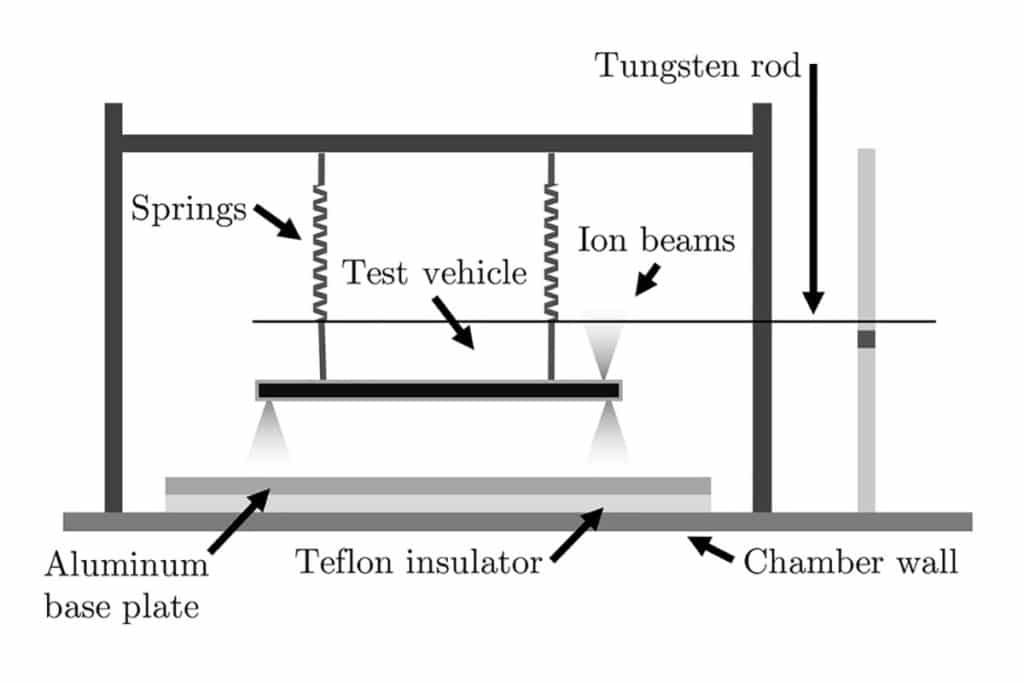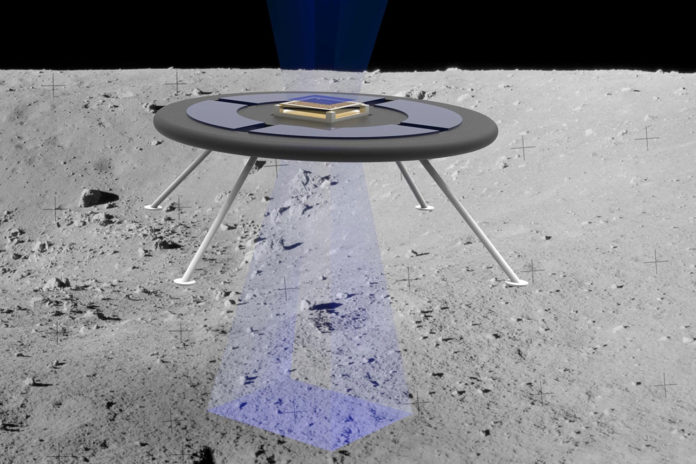Aerospace engineers at MIT are testing a new concept for a hovering rover that levitates by harnessing the moon’s natural charge.
The MIT team’s levitation rover, which resembles a retro-style, disc-shaped flying saucer, uses tiny ion beams to both charges up the vehicle and boost the surface’s natural charge. The overall effect is designed to generate a relatively large repulsive force between the vehicle and the ground in a way that requires very little power.
Its design relies on the use of miniature ion thrusters, called ionic-liquid ion sources. These small, microfabricated nozzles are connected to a reservoir containing ionic liquid in the form of room-temperature molten salt. When a voltage is applied, the liquid’s ions are charged and emitted downwards and out of the rover as a beam through the nozzles with a certain force. The system’s disc shape maximizes the repulsive force between the rover and the ground, meaning that it needs very little power.
“We think of using this like the Hayabusa missions that were launched by the Japanese space agency,” says lead author Oliver Jia-Richards, a graduate student in MIT’s Department of Aeronautics and Astronautics. “That spacecraft operated around a small asteroid and deployed small rovers to its surface. Similarly, we think a future mission could send out small hovering rovers to explore the surface of the moon and other asteroids.”

In their initial tests, the team predicted that a small rover, weighing about two pounds, could achieve levitation of about one centimeter off the ground on a large asteroid like 6 Psuche, using a 10-kilovolt ion source. To get a similar liftoff on the moon, the same rover would need a 50-kilovolt source.
“This kind of ionic design uses very little power to generate a lot of voltage,” explains Paulo Lozano, co-author of the paper detailing the design. “The power needed is so small, you could do this almost for free.”
The current model is designed to predict the conditions required to simply achieve levitation, which happened to be about 1 centimeter off the ground for a 2-pound vehicle. The ion thrusters could generate more force with a larger voltage to lift a vehicle higher off the ground. Lozano says future missions to the moon and asteroids could deploy rovers that use ion thrusters to safely hover and maneuver over unknown, uneven terrain.
“With a levitating rover, you don’t have to worry about wheels or moving parts,” Lozano says. “An asteroid’s terrain could be totally uneven, and as long as you had a controlled mechanism to keep your rover floating, then you could go over very rough, unexplored terrain without having to dodge the asteroid physically.”
